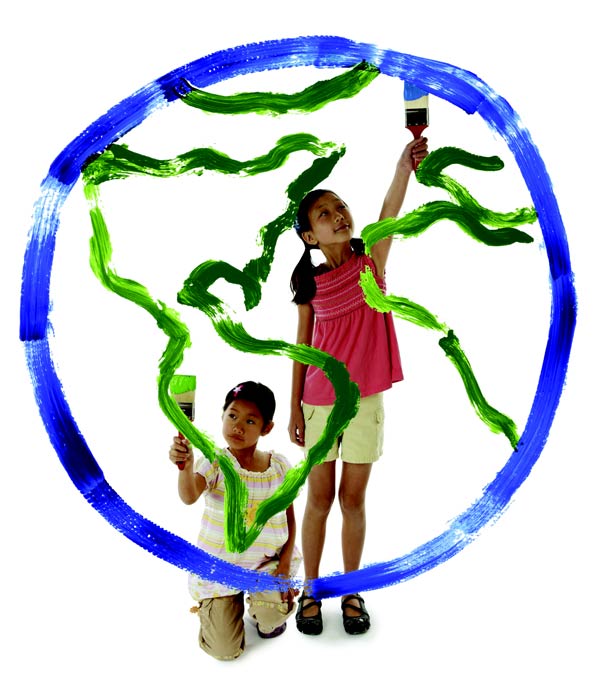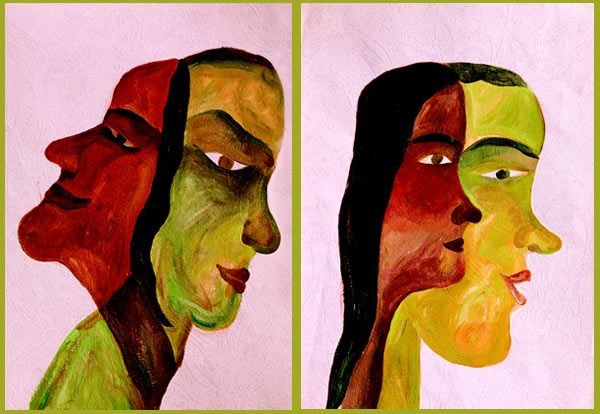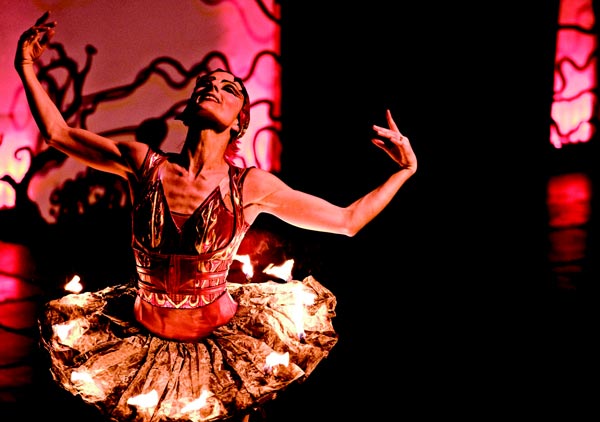
The coolest spot in Northern California is in actuality scorching hot; The Crucible – is a non-profit arts education center that fosters a collaboration of arts, industry and community in a 56,000 square foot warehouse facility in West Oakland. The school features, among its many hot classes, some of the most ancient of the arts – like blacksmithing.
The Crucible offers a myriad of classes that inspire creativity in everyone from children as young as eight, teenagers and their parents, and adults of all ages and backgrounds in the best-equipped industrial arts facility in the Bay Area. An extensive curriculum of classes in industrial arts are offered that bring out the best creativity from the most ambitious to the slower-paced meticulous art of jewelry-making led by an energetic group of guest instructors and faculty.
The classes available ignite imaginations, and the creations of sculptures, metalwork, artworks, glass, ceramics, furniture or jewelry have the surprise and rewards of great accomplishment. Over 5,000 students annually create in a vast range of variety – bronze casting, mold making, woodworking, neon, welding, glass working, blacksmithing and fire dancing. The Crucible, is not only a school for the creation of sculptural objects, miniature to monumental, but is also famous for their spectacular annual public events, uniting artists from many disciplines in imaginative theatrical productions of opera, music and dance dedicated to the creative fusion of art, fire and light.

The Crucible’s smithy is where iron and other metals are heated and manipulated by the strike of the hammer into shapes by welding, twisting with rotational force, drawing, cutting, punching, bending, splitting, upsetting and controlled hand forging and forming shapes made with yellow-hot malleable metals on the anvil or in the vise. The forms emerge as a result from the swing of the sledge, mallet or the peen hammer, until the forger quenches the near red-hot steel with a steady stream of water and as the sizzling steam cools, it shrinks the object and sets the metal into the desired shape. Voila! The enduring object made by hand and heart yields a great pride of creation.
The metallurgical art of melting metal, and converting it to utilitarian objects, has survived millennia as evidenced by buried iron and bronze artifacts. The ancient Etruscans who inhabited the regions of Umbria, Tuscany, Lazio and Campania, the pre-Roman period metallurgists forged iron and copper in crucibles and forges thousands of years before Christ walked in Galilee. Blacksmithing is one of the earliest trades, which dates as far back to 3000 BC to the Bronze and Iron Age when the Egyptians, Celts, Etruscans and then the Romans formed equestrian or architectural elements and magnificent statues that honored the gods and the Caesars. Their civilizations became powerful and dominant as they inhabited regions rich in minerals and they mined natural resources and developed skills to make spears, swords, francisca throwing axes and battle weapons and built horse-drawn war machines that could out-race the enemy. The production of metal objects of warfare, tools and transport, in the ancient world, was the primary reason the conquerors overpowered other nations and with it came the spoils of war.
Today the arts of welding, blacksmithing and general metal fabrication enjoy resurgence, and The Crucible in Oakland, is one such place that ignites a new enthusiasm for the ancient and nearly lost profession of molding metal into desired shapes.
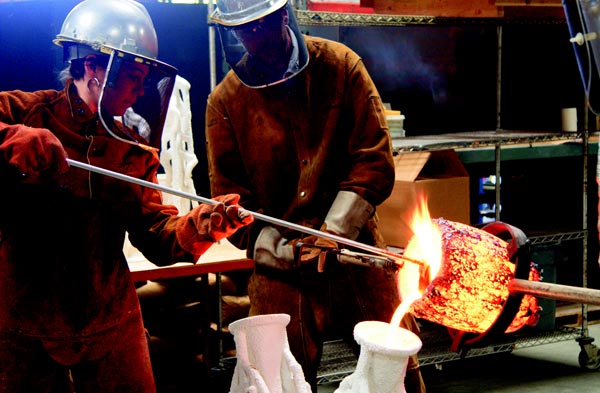
What is a blacksmith? A blacksmith is a person who practices the art of shaping heated iron and steel, forging utilitarian hand tools and who hammers on an anvil with hammers, tongs and chisels. The word ‘black’ comes from the color of the metal after heating and cooling. The word ‘smith’ comes from the word ‘smite’ meaning to strike therefore a blacksmith is one who strikes and shapes black metal with a hammer. The five basic blacksmith tools are the anvil, the forge – the place to hold the fire, the vise, the hammer and the slack tub. An offshoot blacksmith job is the ‘farrier’ – a person who makes and fits custom horseshoes.
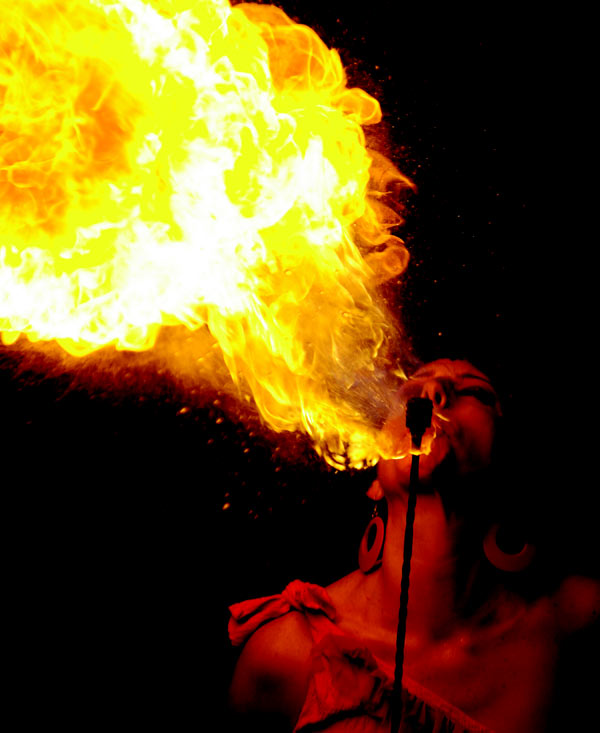
THE VISION OF THE ORGANIZATION’S FOUNDER
The Crucible’s Youth Program offers classes, workshops and field trips that expose young people to both the fine and industrial arts. The Crucible’s innovative approach to education is the brainchild of its visionary Founder and Creative Director Michael Sturtz, who with his staff, are dedicated to promoting healthy youth development and strengthening competencies in leadership, community service and skill building. The goals of the non-profit school are sincere and achievable, in that they offer inspiring classes and workshops, with stress on community service projects who strive to create relationships with the youth, parents, schools and community-based organizations. Their desire is to inspire and generate interest in a new generation of industrial artists to enrich the community, and they have a very realistic vision to be one of the premier art centers in the country.
Michael Sturtz founded The Crucible in 1999, presently assisted by Kristy Alfieri, the Director of Programming, Carla Hall, Ismael Plasencia, Rob Nehring, and a large faculty including 75+ instructors who serve thousands of youth and adult students each year through workshops, classes, field trips, youth camps, events and community outreach programs. The organization has awarded nearly 300 scholarships to enable disadvantaged youth to experience art. The popular children’s workshops and classes include; blacksmithing, flame working, woodworking, welding, ceramics, radical robots, clay and neon sculpture and jewelry making. Over 57% of the children served through the school’s community programs come from Oakland and the rest from the Bay Area.
Michael Sturtz earned his M.F.A. at The School of the Art Institute of Chicago and graduated Magna Cum Laude from New York State College of Ceramics at Alfred University. He extended his education at the esteemed Studio de Sem Ghelardini and Studio Art Centers International in Italy winning the S.A.C.I. Award for excellence in Florence. Sturtz has won many awards and honors and his artworks are in permanent collections of several colleges and museums in the United Kingdom and the United States. His sculptural metalworks and ceramic artworks have exhibited in Italy, across the nation, in California, the Bay Area and at Walnut Creek’s Bedford Gallery at the Dean Lesher Regional Center.
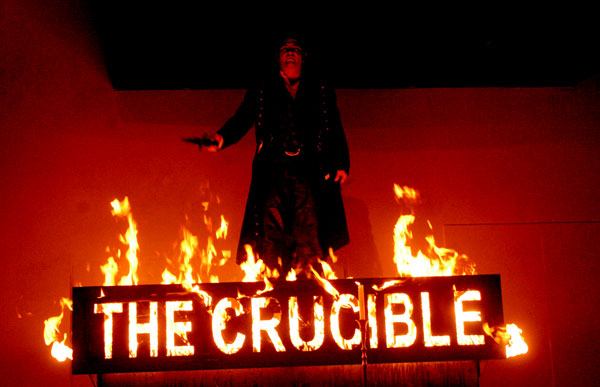
If learning is fun and creating is rewarding – The Crucible takes their philosophy to Bay Area schools to satisfy the burning curiosities of young people, with a with the modified ERV – the Educational Response Vehicle, a converted red truck tricked out as a fire engine that throws attention getting plumes of flames into the air. The ERV is fully equipped for on-the-spot demonstrations of blacksmithing, torch cutting, welding, grinding and flameworking. The ERV has been a favorite attraction at the annual Makers Faire in San Mateo, and Alameda’s 4th of July parade.
Excitement occurred at The Crucible’s forges when it starred recently in a Myth Busters TV episode when the East Bay Discovery Channel crew melted iron and immersed the bits in an acid bath to prove if diamonds can be man-made by using the same techniques as Mother Nature in the heating, cooling and carbonizing of the mineral. Anyone interested in the formula?
The school is located in the heart of the Oakland community where the large warehouse is always bustling with artisans, students, and inventive artistic activities spearheaded by the fiery ambitious staff and instructors guiding students and inspiring artists with nearly 700 classes offered each year. The school is a collaboration of arts, industry and community featuring sculpture studio, foundry and metal fabrication shops for youth. Now in their eleventh year, they operate on a six-figure budget with major funding from community organizations, the City of Oakland, Cultural Funding Programs, foundations and charitable trusts. The non-profit school could not enjoy its unparalleled success without its 700+ members and a 1,200 enthusiastic volunteer base who have generously donated 8,000+ hours.
In addition to classes, The Crucible also supports the works of artists and artisans by making rental space available for private or shared studios and lockers within the warehouse facility with 24-hour access to their studio. The rented area is equipped with industrial pallet racks and 120-volt electrical outlets, in a secure building where renters become part of the vibrant collaborative and creative environment with the camaraderie of like-minded people.
FUNDAMENTALS OF FIRE-EATING, FLAME THROWING AND ARTISTIC PYROTECHNICS
The special workshops for adults offered as corporate or private team-building projects, are cutting-edge and innovative. For intrepid smithies, wanting to forge a metal throne or wrought a double-twisted balcony railing, the forge is always hot and ready. Then there are flame-related classes with Maori specialties such as Poi – Fire Dancing, Fire-Breathing and, not for the faint-hearted, the muy caliente Fire-Eating workshop. For those who really like it hot –sign up for the advanced workshop of Fearless Fire Eating – while walking on stilts. The art of Poi spinning with Kevlar-roped fireballs is a blazing choreographic showstopper that could lead to fire hula hooping. The advanced fearless fire-eaters, who learn to eat fire with grace and confidence, are required to bring their own fire-torches from home! Radical robots and kinetic art sets the school’s mood alive and the thrill of a project’s completion is exhilarating to the young creators. Yes, I said at the outset; The Crucible is a very cool place for some who like it hot…
For the Harley Davidson riders, an entry-level class titled The Art of Motorcycle Maintenance and Repair is available. For bikes with damage, frame and engine repair workshops are available with a qualified instructor to get your hog back on the road and if the rider wants to trick out a bike, yes, someone could do that too. To add a new gizmo to the tool apron, stroll down the aisle to the blacksmithing workshop to make a new tool, tongs or a peen hammer to pound in the loose hand-wrought iron rose-head nails. For the fired-up blacksmiths who want to work in their own garden, Build-Your-Own-Forge is a good first step to fine-tune rusty smithing techniques.
FIRE AS ART
To celebrate the school’s blaze of creative achievements during the year, the talents of the foundry’s artists and collaborators, feature with impressive creations enhanced with flame and fire in spectacular celebration. What better way to manifest their devotion and reverence of the mysteries of fire than to integrate flames into the annual entertainment events of fire-focused pyrotechnics highlighted by theatre, music, opera, ballet and innovative dance?
For its yearly theatrical collaborations, The Crucible’s studio space is transformed into a vast stage, with overhead lights and a state of the art sound system where innovative musical events feature professionally produced shows ignited with the elements of lights and fires. Sturtz masterminded the idea to satisfy the pyrophiliacs in an ambient paradise of fire-worship with the synergy of artistic theatre.
Benefit productions that have enraptured audiences in the past were Stravinsky’s Firebird – Fire Ballet with a thirty-piece orchestra and fiery stage stunts; Dracul: Prince of Fire a fire ballet of passion – an amalgam of classical and modern macabre dance about the stoker, vampires, fiery effects and a fire fountain sculpture amid flying sparks and roaring forges. Prokofiev’s fiery music set flame to the Romeo and Juliet – A Fire Ballet with aerial dancers on a flaming steel chandelier, martial arts, fire-eaters and jugglers with the score and story retrofitted to craft the foundry’s fantasy stage of fires and lights. Romeo’s bronze heart was cast, live and in real-time on the stage, and when swords were drawn, it was not from sheaths, but directly from roaring flames in the fiery forge. The opera The Seven Deadly Sins by Kurt Weill and Bertolt Brecht offered beautiful music choreographed with combustion and flames. The Fire and Light Festivals celebrate with the high-voltage focus of fire as art; Vesta, goddess of the hearth, Pele, keeper of volcanoes and Vulcan, god of flame and fire smile when rolling fireballs light up the stage, as if Jupiter himself threw the thunderbolts.
Under the lightning-bolt genius of Founder/Creative Director Michael Sturtz, who conceives and directs the spectacular stage productions, celebrates the forging of fire, creative combustion and artistic fire effects melded with opera, music and dance. The luminary vision of the director, with unusual creativity, is radiantly brilliant and Sturtz is truly a risen star soldering his smoldering ideas and sizzling dreams into a flambé of fantasy – reminiscent of the dazzling Sorcerer’s Apprentice.
Yes, The Crucible is the hottest high-voltage place in Northern California and it is getting hotter every day. Free tours are offered every Tuesday and Thursday at 6PM.
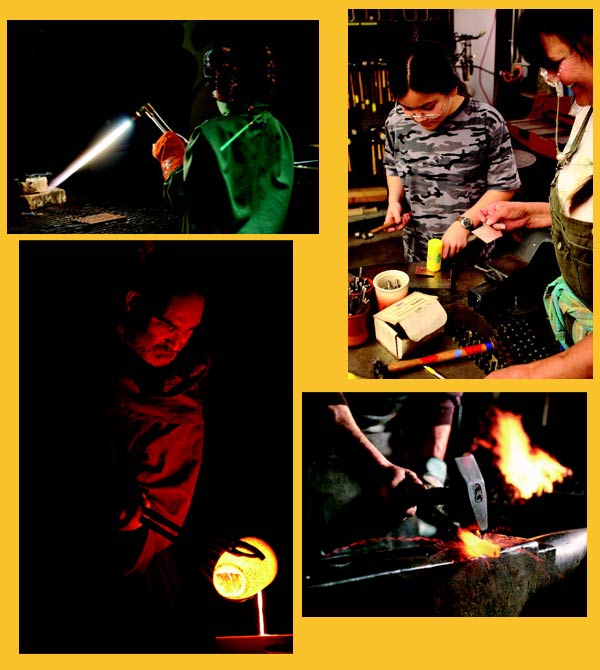
Photos: L top to R: Youth Welding, Mother & Daughter taking Introduction to Jewelry & Metal Class together, Photo by Becca Jay.
Foundry Master, Nick DiPhillipo doing a live bronze pour as Friar Lawrence in the 2007 Fire Ballet,
Romeo and Juliet, Photo by Juan Carlos, Blacksmithing.
All photos courtesy The Crucible
Fire and Light Soiree and Art Auction – 15-17 July 2010
Youth Summer Camp Sessions; June 21-25, July 5-9, & 19-23, August 2-6
The Crucible, 1260 7th Street, Oakland, 94607 * 510.444.0919 * www.thecrucible.org

